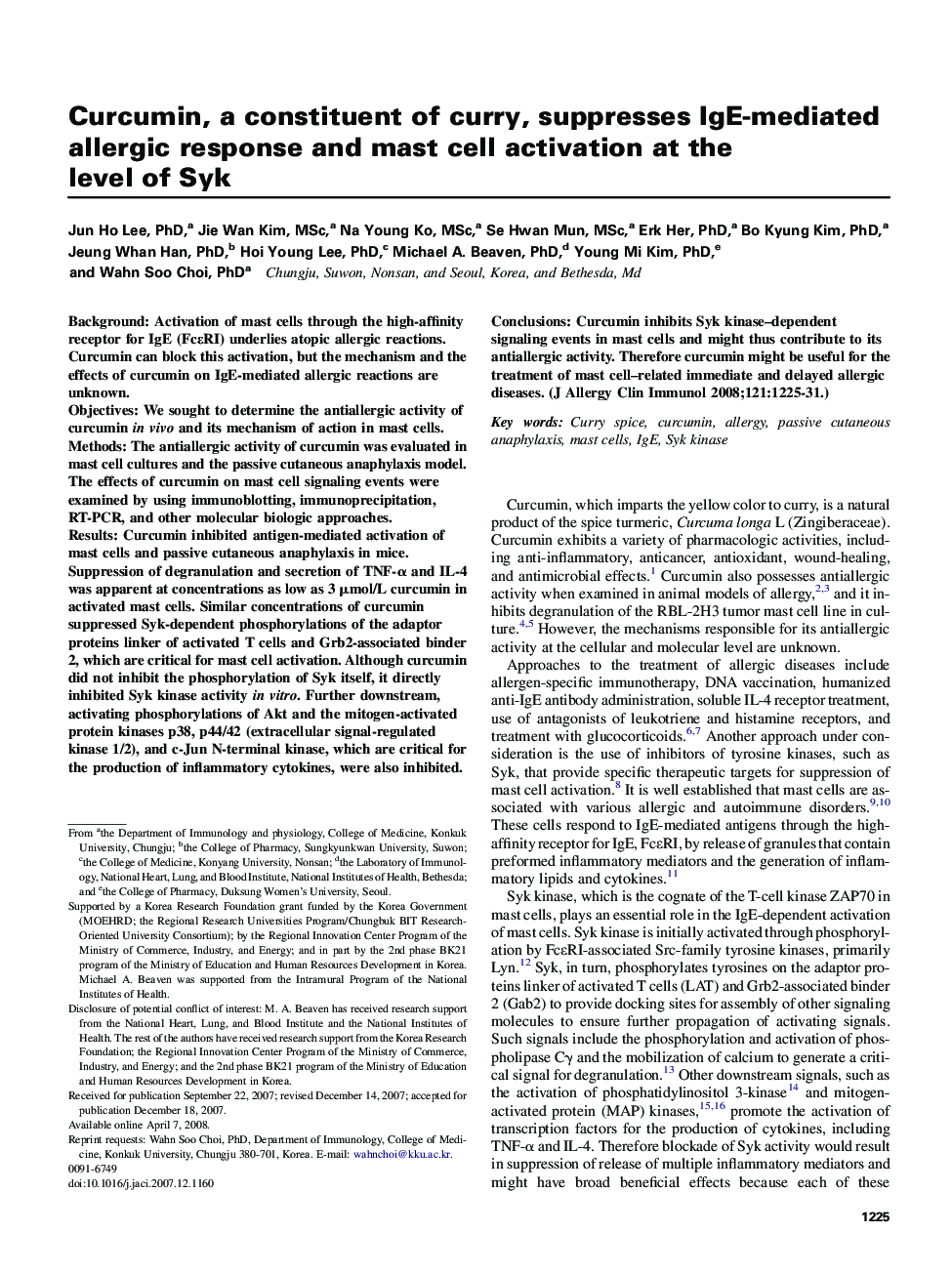| Article ID | Journal | Published Year | Pages | File Type |
|---|---|---|---|---|
| 3201208 | Journal of Allergy and Clinical Immunology | 2008 | 7 Pages |
BackgroundActivation of mast cells through the high-affinity receptor for IgE (FcɛRI) underlies atopic allergic reactions. Curcumin can block this activation, but the mechanism and the effects of curcumin on IgE-mediated allergic reactions are unknown.ObjectivesWe sought to determine the antiallergic activity of curcumin in vivo and its mechanism of action in mast cells.MethodsThe antiallergic activity of curcumin was evaluated in mast cell cultures and the passive cutaneous anaphylaxis model. The effects of curcumin on mast cell signaling events were examined by using immunoblotting, immunoprecipitation, RT-PCR, and other molecular biologic approaches.ResultsCurcumin inhibited antigen-mediated activation of mast cells and passive cutaneous anaphylaxis in mice. Suppression of degranulation and secretion of TNF-α and IL-4 was apparent at concentrations as low as 3 μmol/L curcumin in activated mast cells. Similar concentrations of curcumin suppressed Syk-dependent phosphorylations of the adaptor proteins linker of activated T cells and Grb2-associated binder 2, which are critical for mast cell activation. Although curcumin did not inhibit the phosphorylation of Syk itself, it directly inhibited Syk kinase activity in vitro. Further downstream, activating phosphorylations of Akt and the mitogen-activated protein kinases p38, p44/42 (extracellular signal-regulated kinase 1/2), and c-Jun N-terminal kinase, which are critical for the production of inflammatory cytokines, were also inhibited.ConclusionsCurcumin inhibits Syk kinase–dependent signaling events in mast cells and might thus contribute to its antiallergic activity. Therefore curcumin might be useful for the treatment of mast cell–related immediate and delayed allergic diseases.
